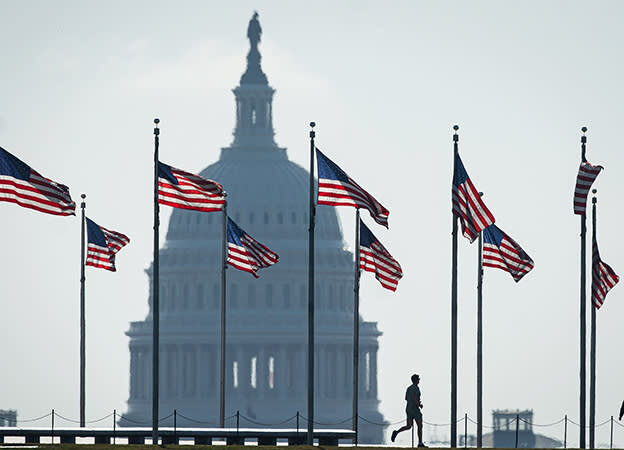
- There is currently no real alternative to the US dollar
- But will debt ceiling ructions provide the incentive to create one?
Crisis averted: by suspending the debt ceiling, the world’s biggest economy has avoided default. The stakes may have been huge, but the risk was ultimately low. Matthew Ryan, head of market strategy at financial services firm Ebury, said that “an agreement was already widely expected, with investors seeing only a very small chance of default given the enormous ramifications of such a monumental political fumble”.
So was talk of x-dates, default, de-dollarisation all overblown?
Stephen Kaplan, associate professor at George Washington University, thinks that the stand-off still raised some very uncomfortable questions about the US economy. In an interview with Goldman Sachs, he said that “year after year, we come up to a debt ceiling where it creates this moment where the globe questions the political willingness to pay”. According to Kaplan, even if the US’s economic capacity to pay its debt was not really in doubt, uncertainty about its political willingness to do so “can’t be good for any US dollar asset”.
Kaplan stressed that while the threat of default might be a powerful bargaining chip for politicians, it is also a cataclysmically risky one. He said that the global demand for dollars and its status as the world’s reserve currency is “something that US politicians ultimately should do everything possible to support”, and warned that if a serious debt ceiling stand-off becomes a regular fixture, it will only create an incentive for “enterprising countries and institutions” to try to find a dollar alternative.
But – for now, at least – the dollar should be protected by the fact that there isn’t a ready alternative. Goldman Sachs’ chief political economist, Alec Phillips, said that while the brinkmanship around the debt limit “probably does reduce confidence in treasuries, and, ultimately, reduces confidence slightly in the dollar”, other potential reserve currencies don’t look much better (see chart).
He thinks that while the stand-off “certainly does not help the status of the dollar, it’s unclear that it really hurts it that much, particularly in the absence of an obvious alternative”. Phillips points out that the euro – the main contender for global reserve currency – has had “fiscal issues” of its own over the years, which involved more credit risk. The dollar’s status as a safe haven looks secure.
With the debt ceiling stand-off behind us, a tug of war between this safe haven demand and interest rate movements looks set to determine the dollar’s path for the rest of the year. At the time of writing, the Fed looked closer to the end of the tightening cycle than either the Bank of England (BoE) or the European Central Bank (ECB). Analysts at State Street Global Advisors expect the dollar’s ‘rate advantage’ to narrow as the Fed moves to cut rates while the BoE and ECB raise rates again and keep policy ‘on hold’ for longer.
Though lower interest rates usually mean lower currency demand, the US is a particularly special case. Rate cuts will ultimately be triggered by a US economic slowdown, which has substantial implications for global economic growth and risk sentiment: as the old saying goes, when America sneezes, the rest of the world catches a cold. State Street Analysts think that a flight to safety could see investors pile back into the dollar if the risk of global recession increases towards the end of the year.
But though the dollar’s status as a safe haven looks secure, this has not been a particularly edifying episode for the US economy. Following the debt ceiling agreement, George Lagarias, chief economist at Mazars, said that “investors should reflect on how low the bar for rational behaviour by policymakers is”. He has a good point: avoiding “self-immolation” through “the wanton default of the biggest economy in the world” is hardly a high baseline.
Though default is off the table for now, fears could rise again after the current deal expires in 2025. If Kaplan is right, the tail risk of a default will ultimately erode the willingness of investors to hold US dollars. Though the US dollar looks remarkably unblemished for now, over the longer term, this instability could take a toll.




